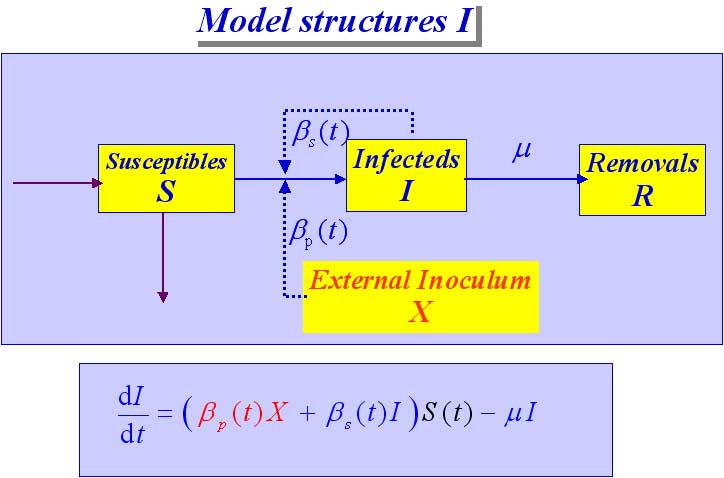Epidemiology
The study of the spread and control of infectious disease
- Infectious disease occurrence in populations
- Epidemic: Outbreak of a disease affecting many people in a short time
period (cholera)
- Common source epidemic (single source outbreak) (Leptospirosis
in triathletes)
- Propagated epidemic:
2014 Ebola
outbreak
- Endemic: Disease which is present at a steady level in a population
(gonorrhea)
- Pandemic: Disease which has spread globally (AIDS)
- Sporadic disease: occasional outbreaks in a population (tetanus)
- The spread of a disease depends on many variables
- Pathogen virulence
- Mode of transmission
- Host population resistance
- Incubation period of the disease
- The tools of an epidemiologist
- Surveys, public records, census data
- Field studies: questionnaires, interviews, lab tests
- Statistical analyses
- Incidence rate (Morbidity)
- Which of the following diseases had the highest incidenc
 e in
the US for
2010:
HIV, malaria, syphilis, Lyme Disease, STEC E.
coli?
e in
the US for
2010:
HIV, malaria, syphilis, Lyme Disease, STEC E.
coli?
- Prevalence rate
- Mortality rate
- Demographics
- Modeling
studies
(diagram >>>)
- # Infected over a period of time (dI/dt)
- # susceptibles: unvaccinated
- Removals: immunity, vaccination, death
- Studying an epidemic
- Descriptive epidemiology
- Field epidemiology
- Surveillance epidemiology
- Hospital epidemiology:
nosocomial infections (72,000
deaths in 2015)
Disease Detectives & The Infectious Disease Cycle
Epidemiology of an infectious disease
- Identify the Pathogen
(e.g. 1993
Hantavirus outbreak)
- Signs & Symptoms
- Role of Clinical Laboratory
- Diagnosis
This is not always immediately possible (AIDS)
- Locate the Source
(e.g.
1854 cholera outbreak)
- Reservoir
- Zoonosis
- Carrier
- Healthy
- Incubatory
- Active
- Convalescent
Controlling the source of an epidemic can stop the spread of an epidemic
(e.g. cholera )
- Establish Method of Transmission
(2013 H7N9 avian
influenza outbreak)
- Airborne
- Contact
- Vector
- Vehicle (fomite)
Control of disease transmission may work when other methods won't
(Malaria)
- Determine Role of Host Susceptibility
(e.g.
AIDS epidemic)
- Virulence of pathogen
- Host immune system
Vaccination can limit the spread of disease completely (smallpox)
- Find Exit Route
- Active escape
- Passive escape
Disease Prevention
- Public Health Education
- Epidemiology
- Managing outbreaks
- Identifying risk factors
- Eliminating reservoirs
- Reducing transmission
- Vaccination:
- Active immunization
- Passive immunization
- post-exposure prophylaxis (rabies)
- symptomatic treatment
- protection of immunodeficient individuals
- anti-toxins (botulism, tetanus)
- Epidemiological case studies
- Effectiveness of vaccination
-
protection of the individual: efficacy
-
protection of the community:
herd immunity
- Zika virus: 63%?
- Measles: 95%
- Polio: 80%
- COVID-19: ?
-
depends on R0
(R-naught)
- the number of secondary infections resulting from one infected
individual in a susceptible population
- a measure of contagiousness
- e.g. Measles = 12-18
- When portions of a population are no longer susceptible, we use
the effective reproductive rate R
- R = s*R0
- s = proportion of population that is susceptible
- If R < 1, the epidemic will end
Links/References
-
https://plus.maths.org/content/maths-minute-r0-and-herd-immunity
 e in
the US for
e in
the US for
